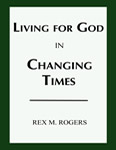Aesop’s Fables have been with us since the 6th Century B.C. The fables’ fame is rooted in their antiquity, story-telling form, and common sense.
Whether Aesop, reputedly a slave who later became a free man, wrote the fables or wrote some, compiled some (scholars lean to the latter) is still debated. Either way, the canon has been settled upon some 656 fables Aesop apparently told in his lifetime.
Not long ago I set out to read some of the classics, books I’d heard about all my life but never got around to reading. Aesop’s Fables made the list.
Aesop’s stories relate to common experiences in everyday life often as seen or spoken through the vantage point of animals, two attributes of his writing that have allowed the fables to translate easily across languages and cultures and most especially into the lives of children. And, the stories are an illustrator’s dream.
Some of the fables are what we’d call “lame,” not very weighty or convincing and not particularly useful. Then again, many are interesting for their universal appeal or for their surprising insight.
“The Fox and the Grapes,” that is to say “sour grapes,” has entered the conversational lexicon. So has “The Goose That Laid the Golden Eggs,” the ill-fated bird killed by a farmer’s greed. In “The Tortoise and the Hare” we see that “slow and steady wins the race.”
In “The Mischievous Dog” we learn that “notoriety is often mistaken for fame,” something our celebrity-mad culture could do to relearn. “The Crow and the Pitcher” teaches “necessity is the mother of invention.” This, our pioneer forefathers handed down to us, though such initiative and creativity are waning in contemporary culture.
“The Gnat and the Bull” teaches “we may often be of more consequence in our own eyes than in the eyes of our neighbors.” While “The Shepherd’s Boy and the Wolf”—remember the boy who cried “Wolf?”—warns “you cannot believe a liar even when he tells the truth.” This is applicable in today’s bloodsport national politics if not also in office politics. Another refresher we need in our politics is listed in “The Boy Bathing,” wherein the moral is “give assistance, not advice, in a crisis.”
“The Two Bags,” like several other fables, is reminiscent of Scripture. In this story we’re told that every person carries two bags, one in front and one behind, both packed full of faults. The bag in front contains our neighbor’s faults while the one behind contains our own. So, you guessed it, we always see our neighbor’s faults but never our own. Matthew 7:3 asks why we look at the speck of sawdust in our brother’s eye but fail to see the plank in our own.
“The Dog and the Shadow” addresses greed, while “The Crow and the Raven” is about the cost of pretentiousness.
Some of the reading was slow and, to me, nonsensical. But I can see why the fables have earned global acclaim. Aesop’s fables aren’t the proverbs of Proverbs, but they are interesting and thought provoking. I enjoyed reading them.
© Rex M. Rogers – All Rights Reserved, 2012
*This blog may be reproduced in whole or in part with a full attribution statement. Contact Rex or read more commentary on current issues and events at www.rexmrogers.com or follow him at www.twitter.com/RexMRogers.


